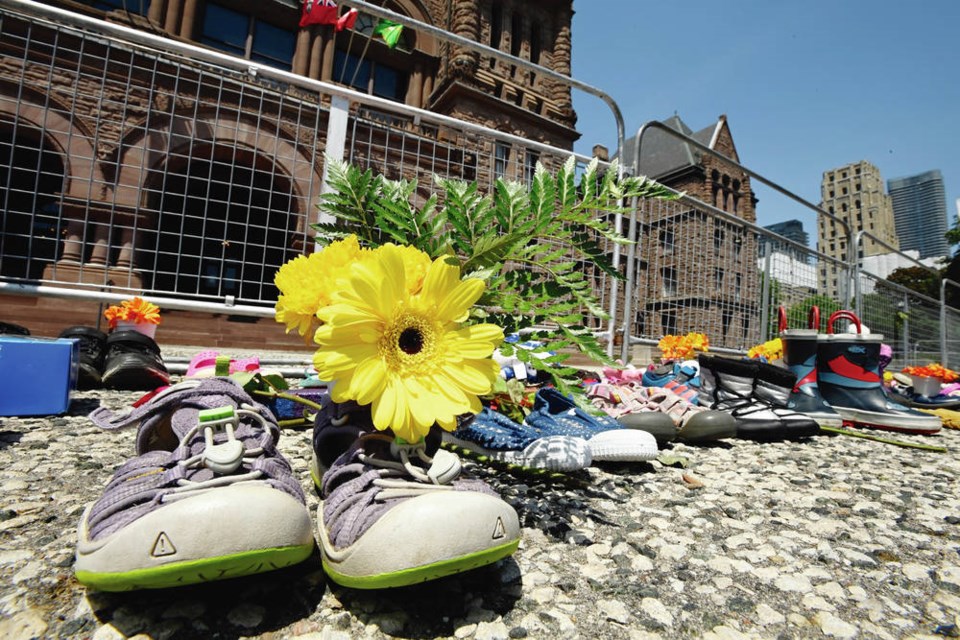In last week’s column, I suggested that: “B.C.’s public education needs to move beyond just including Indigenous symbolism as part of its public image to a point where the requirements of Indigenous culture are integrated into the day to day organization of what are still Eurocentric assumptions about how to organize public schools.”
In fact, the good news is that, according to a British Columbia Teachers’ Federation report, the six-year high school completion rate of Aboriginal students increased from 46.8% to 69.6% in the past 15 years.
A 2019 report by then-B.C. auditor general, (the aptly named Carol Bellringer) confirms those numbers. Nonetheless, there is still much work to be done in the area of 2021 Aboriginal education by and within the B.C. public school system.
One suggestion has been that the grad rate for Indigenous students in public schools could be accomplished “by reducing the impact of an inflexible graded school system upon Native children and allowing, in the early years of schooling, for a continuous, incremental pattern of learning.”
A timely suggestion for policymakers about accomplishing something like that in the interest of Indigenous learners? Absolutely, except that recommendation is No. 25 from the 1988 Report of the Royal Commission on Education — 33 years ago but not fully realized yet.
That theme was picked up again in 2018 in a far-sighted document, “Making Sense of Aboriginal Education in 91ԭ�� Public Schools,” issued under the auspices of the Central Okanagan Teachers’’ Association (COTA).
The COTA document stresses that for all the talk about Aboriginal education the term has at least three conceptually distinct meanings:
• it refers to the general education of Aboriginal students.
• it implies a need for education that is about Aboriginal worldviews, cultures and experiences,
• and, perhaps most importantly, the term refers to educational purposes and practices that reflect Aboriginal values and aspirations.
A variation of the same recommendation is to be found in the Royal Commission Report — again from 33 years ago.
The authors at that time also suggested that “Native bands and councils and all school authorities co-operate in assisting Native learners to bridge their two cultures (Native and multicultural), by:
(1) improving home/school liaison, particularly throughout the early years of schooling;
(2) orienting all children, through formally developed curriculum units, to the history, culture, status and contributions of First Nations people.
What eventually emerged from the
266-page Royal Commission Report was the 1990 follow-up document “The Year 2000: A Framework for Learning,” which emphasized three things that every parent, teacher or observer of education practice knows to be true: “that learning requires the active participant of the learner and that individual students learn at different rates and in different ways.”
Again, the 2018 COTA perspective emphasizes that for all learners, but especially Indigenous learners, learning occurs through looking, listening, learning and living as the pedagogical typology for all learning, adding that “one does not acquire knowledge without understanding the purpose and meaning in the maintenance of balance in all social and spiritual relations.
“Understanding” says the COTA document “is realized by practising the knowledge acquired in daily life.”
A virtually impossible goal to accomplish with 20 to 30 students of a variety of cultures seated at their desks in an 80-square-metre classroom — but that’s for another column.
Historically, and the recent re-examination of the role of residential schools in Canada’s social, political and education history also brings this to mind, is the fact that Aboriginal education as a white Eurocentric vision, has taken various forms in Canada since the late 19th century.
This model for public education has guided thinking about Aboriginal education not only at the level of the 91ԭ�� federal government and its targeting of Aboriginal children in the residential school process, but also at the provincial day-to-day school level.
The net result has been a general void of authentic knowledge about the realities of Aboriginal peoples’ lives, traditions, contributions, beliefs and worldviews in both Aboriginal and non-Aboriginal students in Canada.
If “Truth and Reconciliation” efforts are to accomplishing anything lasting it will not be accomplished by just changing street names or even by bulldozing the Kamloops Indian Residential School, which still had an enrolment of 500 in 1955 and only finally closed as a day school in 1978.
If the Truth and Reconciliation Commission is to have a chance to accomplish its mandate that will only happen, starting now, with a complete, broad-based and comprehensive overview of all that is meant by the term Aboriginal Education.
As I said, starting today, while the horrors revealed in Kamloops are still fresh in the minds of political and educational leaders, not next week after the news cycle moves on and dims the view.
Geoff Johnson is a former superintendent of schools.



